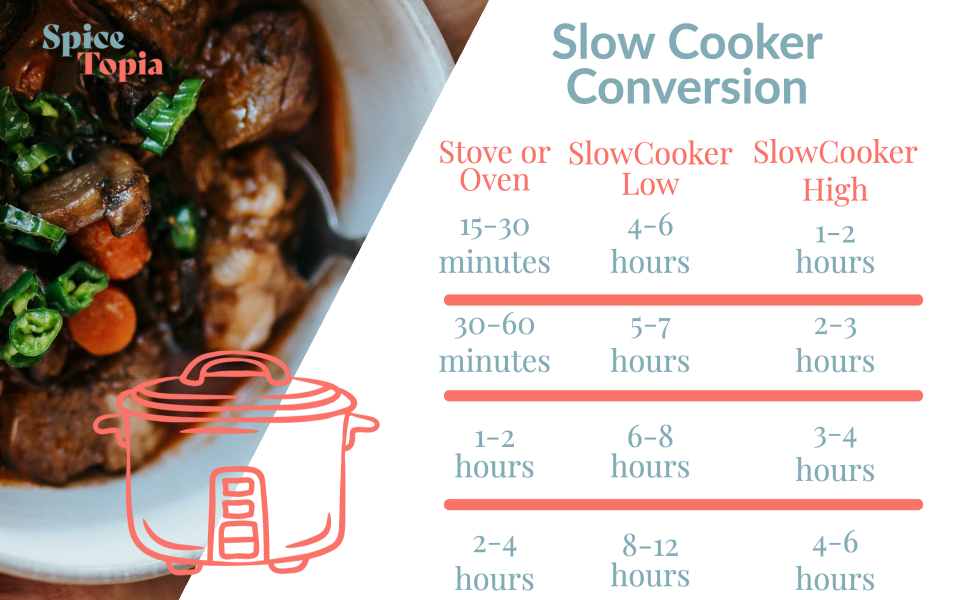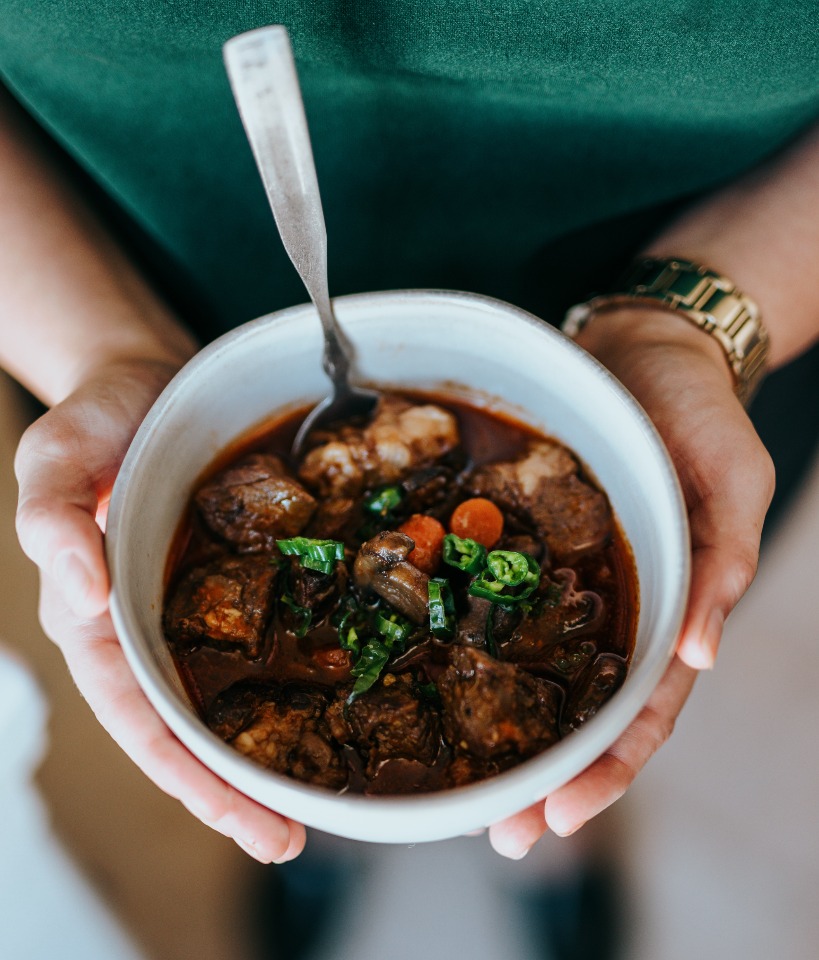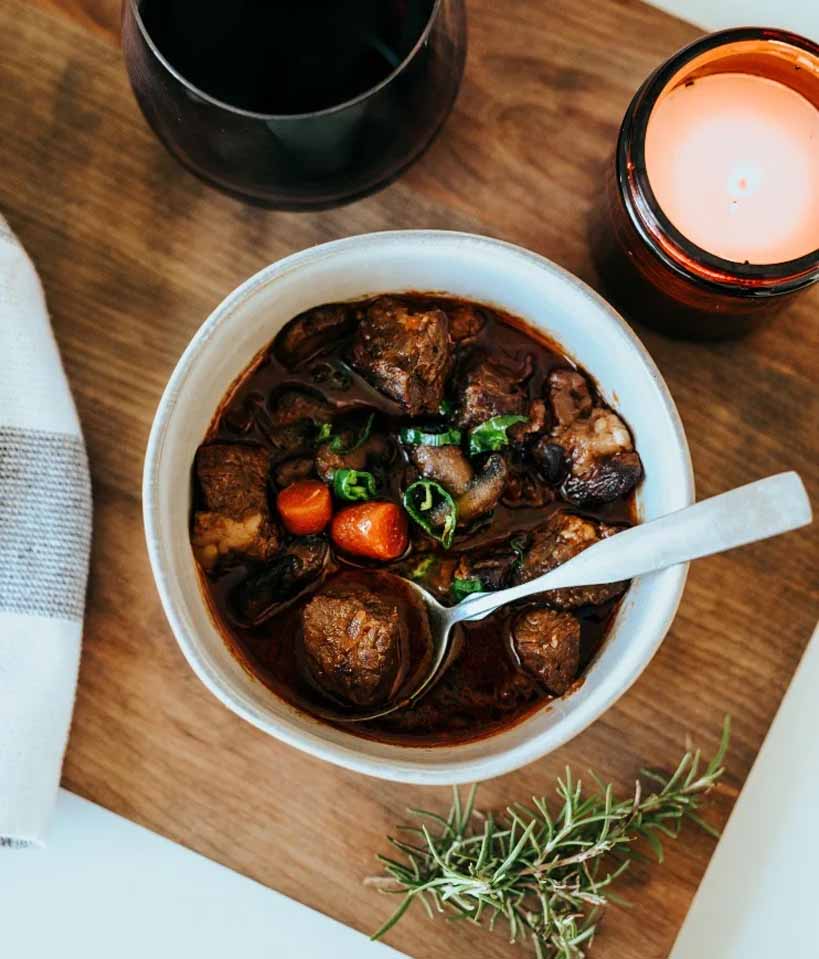Tip One: Season Well
Many times slow cooker meals turn out bland! Think about how you season a traditional meal. Start by sauteing onions and garlic. Add a pinch or two of salt. Add ground beef to your veggies. Add a bit more salt and a few herbs or spices. Add a tomato sauce to that mixture. Another layer of salt is added as are more herbs. Cooking usually involves lots of steps and we season and taste as we go along. Cooking in a slow cooker eliminates many of those steps. Adding all that seasoning all at once can seem like a lot, but it’s necessary to avoid the blandness that brings about the suppertime blues!
Tip Two: Avoid the Dump
Simply dumping all the ingredients into your slow cooker doesn’t allow for maximum flavor. Spending a few minutes to brown meats, saute vegetables, and bloom your spices before adding them to the slow cooker will result in much richer flavors. Onions and garlic simply boiled are not all that appetizing, but those same vegetables sauteed will add an additional layer of depth to your dish. Most spices are oil soluble rather than water soluble, so heating them in oil (blooming) instead of simply dumping them in your cooking liquid allows their full flavor to come out.
Tip Three: Don’t Drown Your Food
Ever opened up your slow cooker to find your meal floating in a thin unappealing liquid that never quite made became a sauce? It’s easy to add too much liquid to your meal when cooking in a slow cooker. Keep in mind that the lid is on the slow cooker the entire time and doesn’t allow for any evaporation. What you put into your slow cooker will still be there when you open your lid. The liquid you add shouldn’t cover more than ⅓ of the other ingredients. Another tip to avoid the runny sauce syndrome is to dredge your meat in flour before browning it. That flour will then thicken any liquid added to your recipe.
On the same note, keep in mind that wine or any alcohol will not evaporate while cooking in your slow cooker. Add alcohol prudently.
Tip Four: Size, Shape, and Fat Matters!
When using meat in your slow cooker, choose fattier and tougher cuts of meat. Boneless skinless chicken breasts or pork tenderloins aren’t the best for a tasty meal when using a slow cooker. They will quickly dry out. Instead choose chicken thighs on the bone, short ribs, or roasts and you’ll end up with tender delicious meat.
When vegetables are your main ingredient, make sure to use more hearty vegetables cut into larger pieces. A small diced tomato or spinach leaves will cook down into mush during the long cooking time. Root vegetables, cauliflower, and winter squash stand up much better to slow cooker recipes. Of course, you may want to add certain vegetables specifically to cook down into the sauce and these are best added in small dice.
Tip Five: Choose the Right Heat Setting
Most slow cooker recipes will benefit from the lower setting. Keep in mind that the lower heat setting (170°F) will take twice as long to cook as the high setting (280°F). That extra time allows the flavors to all meld together and the lower temperature keeps everything moist and juicy.

We’ve created this handy chart to help you convert your recipe’s cook time from stovetop or oven to slow cooker.
Tip Six: Don’t Touch That Lid!
Every time you open the lid of your slow cooker, it takes a good 15-20 minutes to bring everything back to temperature. This not only affects the cooking time, but also the safety of your food. Once you put that lid on and start cooking, keep the lid closed.
Tip Seven: Add Dairy at the End
When cooked for long periods of time; sour cream, milk, yogurt, and cheese may break down and separate in the slow cooker turning your dish into a greasy lumpy mess. Add dairy during the last 5 -15 minutes of cooking.
Plant milks may also separate and should be added at the end of cooking as well. There is nothing worse than coconut “curds” and greasy hemp milk! So also add plant milks at the end of the cooking process.
Tip Eight: End on a Fresh Note
Slow-cooked recipes tend to be rich, so a touch of something fresh will brighten all the flavors up. Think of a sprinkle of chopped fresh herbs, a squeeze of lemon juice, a drizzle of vinegar or olive oil, or even a bit of grated Parmesan cheese to add that important fresh note.

And that our friends are our tips for perfect slow cooker recipes every time!
You may want to try out these tips on our current favorite fall slow cooker recipe, Aloo Gobi!



